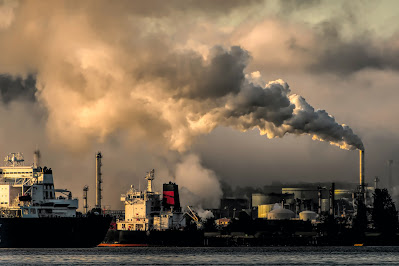In the bustling heart of our modern world, where cities thrive with life and opportunity, an invisible adversary lurks in the air we breathe – air pollution. As our cities expand and populations grow, so does the concerning issue of air pollution.
It's a problem that affects us all, from the bustling metropolises of New York and Tokyo to the emerging urban centers of Delhi and Nairobi. In this article, we delve into the challenges cities face in combating air pollution and explore innovative solutions that hold the promise of cleaner, healthier urban environments.
Understanding the Gravity of the Issue
The first step in addressing any problem is to fully understand its gravity. In the case of air pollution, the numbers are staggering.
According to the World Health Organization (WHO), 9 out of 10 people worldwide breathe polluted air, and an estimated 7 million premature deaths each year can be attributed to air pollution. These statistics are a grim reminder that air pollution is not just an environmental issue; it's a public health crisis.
The Challenges Ahead
1. Traffic Congestion and Emissions
One of the primary sources of air pollution in cities is vehicular emissions. As urban populations grow, so does the number of vehicles on the road, leading to traffic congestion and increased pollution. The challenge here is to find sustainable transportation alternatives and reduce emissions.
To tackle this issue, cities are investing in public transportation, cycling lanes, and promoting electric vehicles (EVs). Bogotá, Colombia, for example, introduced the TransMilenio bus rapid transit system, reducing traffic and emissions.*
2. Industrial Emissions
Industries are essential for economic growth, but they often release harmful pollutants into the atmosphere. Striking a balance between industrial development and environmental protection is a significant challenge for cities.
To address this, stringent emissions regulations and incentives for cleaner technologies have been implemented. Shenzhen, China, adopted an emissions trading system, encouraging companies to reduce their pollution levels.
3. Urban Planning and Green Spaces
The way cities are planned can exacerbate air pollution. Poor urban planning can lead to congestion, lack of green spaces, and limited access to clean air.
Urban planners are now emphasizing green infrastructure, parks, and pedestrian-friendly neighborhoods. Singapore's commitment to green architecture and abundant green spaces has earned it the nickname 'City in a Garden'.
Innovative Solutions Taking Root
1. Renewable Energy Integration
Transitioning to renewable energy sources is a pivotal solution. Solar, wind, and hydroelectric power can reduce the reliance on fossil fuels, significantly lowering emissions.
Cities like Copenhagen, Denmark, are leading the way with ambitious plans to be carbon-neutral by 2025, largely driven by the integration of renewable energy.
2. Green Building Technologies
Building designs that incorporate sustainable materials and energy-efficient systems can make a substantial difference in reducing energy consumption and pollution.
The Edge in Amsterdam, often called the greenest office building in the world, utilizes cutting-edge technology to minimize its environmental impact.
3. Data - Driven Approaches
Harnessing data and technology can help cities identify pollution hotspots and develop targeted solutions.
Los Angeles, plagued by smog for decades, now uses air quality sensors and data analytics to monitor and combat pollution in real-time.
Empowering Individuals for Change
While cities play a vital role in combating air pollution, individuals can also make a difference. Here are some simple steps anyone can take:
1. Reduce Personal Vehicle Use
Carpool, use public transport, or opt for biking and walking when possible.
2. Energy Conservation
Reduce energy consumption at home by using energy-efficient appliances and insulating your living space.
3. Support Clean Energy
Choose green energy providers or consider installing solar panels on your property.
4. Plant Trees and Create Green Spaces
Trees act as natural air filters and green spaces improve air quality. Get involved in local tree-planting initiatives.
Final Thoughts
The battle against air pollution in cities is a complex but essential one. We've explored the challenges faced by urban centers and the innovative solutions taking root. However, it's crucial to remember that combating air pollution is a collective effort that requires the active participation of governments, industries, and individuals alike. By working together, we can create urban environments where clean air is not a luxury but a fundamental right.
Edited By - Sagar Bisht
This article has been authored exclusively by the writer and is being presented on Eat My News, which serves as a platform for the community to voice their perspectives. As an entity, Eat My News cannot be held liable for the content or its accuracy. The views expressed in this article solely pertain to the author or writer. For further queries about the article or its content you can contact on this email address - bishtsagar2609@gmail.com










0 Comments